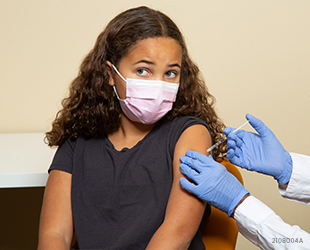Study Finds Disparity in Cervical Cancer Prevention
High-poverty counties in the United States may lag far behind wealthier counties in eliminating cervical cancer, a study published in the AACR journal Cancer Epidemiology, Biomarkers & Prevention found.

Cervical cancer may be virtually eliminated in the United States by 2030 in communities with low poverty rates, but not until 2044 in communities with high poverty rates, according to a study published in Cancer Epidemiology, Biomarkers & Prevention, a journal of the American Association for Cancer Research.
“Other studies have predicted that, as a whole, the U.S. will hit the elimination target in the middle of that range,” said Jennifer Spencer, PhD, lead author of the study and an assistant professor at the University of Texas at Austin, who performed this work as a research fellow at the Harvard School of Public Health. “The fact that some places will hit it a decade before other places is a little bit of a gut punch.”
Approximately 14,000 cases of cervical cancer are diagnosed per year in the U.S., resulting in an estimated 4,000 annual deaths. Over 90 percent of cervical cancers are caused by infection with certain types of human papillomavirus (HPV), a sexually transmitted infection that can also cause anal, penile, vaginal, vulvar, and oropharyngeal tumors.
HPV vaccines have been available since 2006 and currently protect against nine HPV types, including seven of the 14 known to increase cancer risk. Because the vaccine is over 90 percent effective at preventing HPV-related cancers, vaccination efforts could virtually eliminate the diseases, according to experts.
The study showed that vaccination rates in high- and low-poverty areas are similar, Dr. Spencer said.
The lag in eliminating cervical cancer in high-poverty areas could result from factors such as lower screening rates in high-poverty counties and differences in behavioral trends, such as smoking and alcohol consumption, Spencer said. Additionally, high-poverty counties had a higher prevalence of cancer-causing HPV types that aren’t covered by the vaccine—18.3 percent compared to 8.9 percent in low-poverty counties.
“Vaccination can do a lot of good, but it’s unlikely that the disparities can be addressed through just vaccination,” Dr. Spencer added. “The next step is to identify what policies we can use to close these gaps in the future.”
Dr. Spencer and her colleagues created models of the spread and progression of HPV, accounting for the risk of HPV transmission among vaccinated and unvaccinated individuals, the probability of HPV progressing to cervical cancer, the rates of cervical cancer screening, and the odds of effective cancer treatment.
The models predicted that cervical cancer will be virtually eliminated in low-poverty areas by 2030, but that high-poverty areas won’t reach this threshold until 2044, resulting in an estimated 21,604 excess cervical cancer cases in high-poverty areas over the next 50 years.
